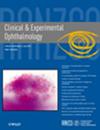Association of obesity and metabolic syndrome with incident primary open angle glaucoma in the UK Biobank
Abstract
Background
We sought to investigate the association between obesity, metabolic syndrome, and metabolic health with incident primary open-angle glaucoma (POAG).
Methods
We included 103 249 UK Biobank participants without previously diagnosed glaucoma or glaucoma-related procedures at enrolment. The primary outcome was POAG identified from diagnostic coding via linked hospital inpatient and primary care data. We used multivariable Cox regression to evaluate the association of body mass index (BMI), and the interaction with metabolic syndrome (MetS) and a novel definition of metabolic health status with incident POAG. BMI was modelled as a time-varying coefficient. Multivariable analysis was adjusted for age, sex, ethnicity, intraocular pressure, spherical equivalent, polygenic risk score and stratified by the presence of primary care data.
Results
There were 471 events of incident POAG over 464 117 580 person-years and a mean follow-up of 12.6 years [Correction added on 18 December 2024, after first online publication: in the “Results” section of the Abstract, the events of incident POAG have been corrected from 647 to 471]. At baseline (time = 0), each one unit increase in BMI was associated with a 9% lower hazard of incident glaucoma (HR 0.91, CI 0.86–0.97, p = 0.0066). Further, compared to a normal BMI range of 18.5–24 kg/m2, a BMI ≥30 kg/m2 was associated with a 65% relative hazard reduction (HR 0.35, CI 0.16–0.80, p = 0.012). There was no significant interaction between BMI and metabolic syndrome or metabolic health (all p > 0.05).
Conclusion
The effect of BMI on the risk of incident POAG varied with time. Higher BMI was associated with a decreased risk of incident POAG in this large prospective cohort. There was no significant association with systemic metabolic health.

 求助内容:
求助内容: 应助结果提醒方式:
应助结果提醒方式:


